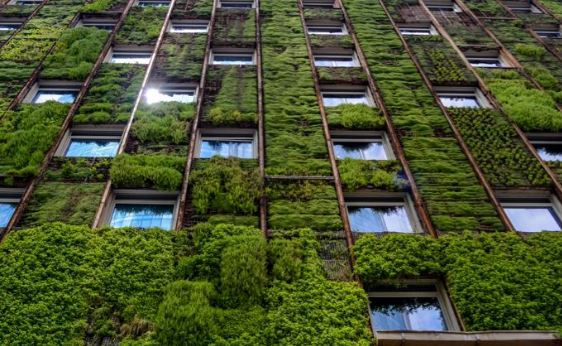Building the Future: Sustainable Structural Design for Texas Urban Centers
As the population continues to grow in Texas, there is a need for sustainable structural design that can accommodate the increasing number of people moving into the urban centers. Sustainable structural design not only offers a solution to the environmental challenges we face today but also provides a more efficient use of resources while creating a more livable and comfortable environment for residents.
In this post, we will be discussing the importance of sustainable structural design and how it is impacting the way we build and design structures in Texas. We will explore the various strategies and techniques that architects are using to design buildings that are energy-efficient, eco-friendly, and cost-effective for urban centers. From green roofs and solar panels to water conservation and materials that minimize environmental impact, we will show you how sustainable structural design is shaping the future of Texas’ urban centers.
1. Introduction to sustainable structural design
In recent years, there has been a growing awareness of the pressing need for sustainable practices in various industries, and the field of structural design is no exception. As urban centers in Texas continue to expand and evolve, it becomes crucial to prioritize sustainable solutions that can address the unique challenges faced by these bustling cities.
Sustainable structural design refers to the integration of environmentally friendly principles and techniques into the construction and maintenance of buildings and infrastructure. It aims to minimize the negative impact on the environment, conserve resources, and create healthier and more resilient urban environments.
One of the primary goals of sustainable structural design is to reduce the carbon footprint associated with construction projects. With the increasing global concern over climate change, finding ways to mitigate the environmental impact of urban development has become a top priority. By utilizing innovative design strategies and sustainable materials, architects and engineers can significantly reduce energy consumption, greenhouse gas emissions, and waste generation.
2. Key Benefits of Sustainable Structural Design in Texas Urban Centers
In the rapidly growing urban centers of Texas, sustainable design has become a critical factor in shaping the future of these bustling cities. With a focus on preserving the environment, reducing carbon emissions, and promoting energy efficiency, sustainable design plays a pivotal role in creating a harmonious balance between urban development and nature.
The importance of sustainable design cannot be overstated. As urban centers continue to expand, the strain on natural resources increases exponentially. By implementing sustainable practices in structural design, we can minimize the environmental impact of these developments while maximizing their long-term benefits.
One of the key aspects of sustainable design is reducing energy consumption. By incorporating energy-efficient features such as solar panels, efficient insulation, and LED lighting, urban centers can significantly decrease their carbon footprint. Additionally, the use of renewable energy sources not only reduces reliance on fossil fuels but also lowers operational costs for both commercial and residential buildings.
3. Challenges of sustainable design in Texas urban centers
Designing sustainable structures in Texas urban centers presents a unique set of challenges. Texas, known for its vast size and diverse climate, is home to rapidly growing cities that demand innovative solutions to accommodate both population growth and environmental preservation.
One of the main challenges is the extreme heat experienced in many parts of the state. With scorching summers and high temperatures, energy consumption for cooling becomes a significant concern. Architects and engineers must develop designs that prioritize efficient insulation, shading, and ventilation systems to minimize reliance on air conditioning and reduce overall energy consumption.
Another challenge lies in water scarcity, particularly in regions like West Texas. Sustainable design must incorporate strategies to conserve water, such as utilizing rainwater harvesting systems, implementing water-efficient fixtures, and promoting landscape designs that require minimal irrigation.
4. Innovative sustainable design practices for Texas urban centers
To meet environmental goals, Texas cities are adopting cutting-edge green building practices. These include installing green roofs, applying passive solar design strategies, and promoting living walls for improved air quality and temperature regulation.
Additionally, utilizing sunlight for natural lighting and passive heating dramatically reduces the energy demand of urban structures.
5. Incorporating renewable energy systems in structural design
Integrating renewable energy sources like solar panels, wind turbines, and geothermal systems into building designs is essential. Harnessing natural resources not only reduces carbon emissions but also lowers long-term energy costs.
For example, Texas’ sunny climate makes solar power an ideal solution for many buildings, helping urban centers move toward net-zero energy consumption.
6. Utilizing green building materials and techniques
Utilizing green building materials like reclaimed wood, recycled concrete, bamboo, and low-embodied-energy products is a game-changer. These materials help cut carbon footprints while supporting local economies.
Sustainable construction also emphasizes efficient building techniques such as prefabrication, which minimizes waste and speeds up project timelines.
7. Enhancing energy efficiency in buildings through strategic design
Energy-efficient design starts with smart building orientation and layout. By optimizing window placement and using skylights, architects can drastically cut down on artificial lighting needs.
Adding renewable systems such as solar panels further enhances efficiency, allowing urban centers to meet energy demands sustainably.
8. Maximizing natural light and ventilation in urban structures
Maximizing natural light and cross-ventilation not only conserves energy but also improves indoor air quality and occupant well-being. Features like light wells, operable windows, and ventilated facades can make a big difference in building performance.
9. Implementing water conservation strategies in structural design
Implementing water-saving techniques like rainwater harvesting, greywater recycling, and low-flow fixtures is critical in drought-prone Texas cities. Sustainable water practices help preserve precious resources while supporting growing urban populations.
One effective approach is to incorporate rainwater harvesting systems into the design. By installing collection systems on rooftops or other suitable surfaces, rainwater can be collected and stored for various purposes such as irrigation, toilet flushing, or cooling systems. This reduces the reliance on municipal water supply and helps conserve water resources.
10. Case studies of successful sustainable structural designs in Texas urban centers
Texas urban centers are at the forefront of sustainable structural design, with numerous successful case studies showcasing innovative and eco-friendly architectural solutions. These projects not only prioritize environmental sustainability but also contribute to the overall livability and resilience of these urban areas.
One notable example is the Austin Central Library, a stunning architectural masterpiece that seamlessly blends sustainable design principles with functionality. This LEED Platinum-certified building boasts a rooftop garden, rainwater collection system, and energy-efficient features such as a smart lighting system and solar panels. The library’s design not only minimizes its environmental impact but also creates a welcoming space for the community to gather, learn, and interact.
Another inspiring case study is the Toyota North America Headquarters in Plano. This LEED Platinum-certified campus showcases sustainable design elements throughout its buildings and outdoor spaces. The complex includes a large central courtyard with native landscaping, rainwater harvesting systems, and energy-efficient HVAC systems. The incorporation of green spaces and natural light enhances the well-being and productivity of employees while reducing energy consumption.
Conclusion and call to action for a sustainable future in Texas urban centers
In conclusion, it is evident that sustainable structural design is a crucial aspect of building the future for Texas urban centers. As we continue to witness the rapid urbanization and development in our cities, it becomes imperative to prioritize sustainable practices that minimize our environmental impact and enhance the quality of life for residents.
We hope you found our blog post on sustainable structural design for Texas urban centers informative and inspiring. As the population continues to grow and urban areas expand, it is crucial that we prioritize sustainable and eco-friendly design practices. By implementing the strategies and principles discussed in this article, we can ensure that our cities not only thrive economically but also prioritize the well-being of the environment and the people who inhabit them. Together, let’s build a future where sustainable design is at the forefront of urban development in Texas.

















































